You've kissed enough boo-boos to know that childhood injuries are all too common — and burns rank as one of the most frequent accidents. One of the top culprits? Scalding from hot bathtub water and liquids that are spilled in the kitchen, such as from a stovetop.[1]
There are many ways you can prevent childhood burns, but if a burn does occur (accidents happen!), you should know how to treat it.
Types of burns
Burns vary in their severity — and are classified by degrees:
- First-degree burns affect just the outer layer of skin. Your little one's skin will be red and swollen, and she'll be in some pain.
- Second-degree burns involve the first and second layers of skin. Your child's skin will be bright-red, swollen and blistery, and she'll be in severe pain.
- Third-degree burns involve all layers of the skin and underlying tissue. Your child would have a wound that looks charred, black, white, leathery or waxy. She may not be in any pain because the nerves on the skin are damaged.
What to do if your child gets burned
Whenever your child gets burned, the first thing you should do is separate your child from the source of heat as fast as possible. The next steps will depend on which type of burn your child sustained.
Home fires
If any part of your child is on fire, wrap her in a blanket, coat, bedspread or even your own body and (if you can) roll her on the ground to extinguish the flames.
Chemical burns
If a chemical substance — like drain cleaner or bleach — has burned your child's skin, flush the area with cool water for at least five minutes before removing any clothes — this will prevent you from exposing any other parts of your child's body to chemicals.[2] Then continue flushing the area with water for up to 20 minutes. If the chemical is a powder, brush it off the skin before flushing the area with water.
Read This Next
Electrical burns
If your child came into contact with an electrical current — for example, she bit on an electrical cord or stuck her finger in an outlet — disconnect the power source.
If you can't do that, separate your child from the power source by using a non-metallic object, such as a wooden spoon, a rope or a large book. Never use your bare hands — you risk getting a shock, too.
How to treat minor burns in children
Minor burns can take up to three weeks to fully heal.[3] Here's how to treat first-degree and small second-degree burns.
- Remove any clothes from the injured area. Remember that in the case of a chemical burn, which should be treated like a major burn, you'll want to flush the area with water for several minutes before removing any clothes.
- Run cool (not cold) water over the wound for at least five minutes.[4] You can also put a clean, cool wet cloth (or washcloth) on the burn for about 10 minutes or until her pain subsides — you'll probably need to continue re-wetting the cloth to keep it cool. Do NOT apply ice, butter or powder to the injury since this could aggravate it.
- Clean the burn gently, using soap and water.
- Don't break or rub any blisters that may have formed. This makes the wound more vulnerable to infection. If the blister does accidentally break, clean the area with water and call the doctor, who may recommend using an antibiotic ointment on the skin.
- Gently pat the skin dry. Then cover the area with a non-stick sterile bandage or gauze to protect the skin. Wrap the bandage loosely so as to avoid putting too much pressure on the area. This will also help protect any blisters from popping. If gauze isn't available, you can use a clean sheet or a towel. Just don't use a cloth that has lint on it, since they can get caught in the burn. Change the dressing once a day.
- Give your little one a pain reliever. You can give her acetaminophen (Tylenol and others) or, if she's older than 6 months, ibuprofen (Motrin and others).
- Call the doctor. Your pediatrician may recommend applying aloe, Manuka honey or another topical ointment like Silvadene (for which you'll need a prescription) for treating a burn, but minor burns usually heal without much more treatment. Just watch for signs of infection — redness, fever, swelling or oozing.
How to treat major burns in children
For more severe burns, like large second-degree and any size third-degree burns, you should seek medical attention right away.
- Remove hot or smoldering clothing — only if the clothes don't stick to the wound. For a chemical burn, you'll want to flush the injured area with water for several minutes before removing any of your child's clothing.
- Lay your little one flat, and, if possible, raise burned body parts above her chest level to reduce the swelling.
- Apply a cool washcloth (or any clean, lint-free cloth) for 10 to 20 minutes. Note that you may need to re-wet the washcloth periodically to keep it cool. Don't immerse large areas of her body in cold water since this could cause shock.
- Do NOT apply ice, butter or powder to the area, since this could aggravate the wound. And, again, don't break (or rub) any blisters, since this makes the wound more vulnerable to infection.
- Cover the burn with a sterile cloth or bandage (or a cool, lint-free sheet), after gently patting the injured area dry. Keep your child as warm and comfortable as possible to prevent shock.
- Call a doctor as soon as possible. For a severe burn, call 911.
- Minimize the scarring. If the burn starts to blister, it may scar or turn a different color than the surrounding skin once it heals. To minimize the scarring, keep the burn covered until it's completely healed. Depending on the burn, your doctor may also advise you to avoid exposing the area to sunlight for up to a year to prevent your child's skin from becoming discolored.
When to call the doctor
When treating a burn, it's important to call the doctor as soon as you've dealt with the injury. Call 911 as soon as possible if the following conditions apply:
- You think your child has a serious or large second- or third-degree burn.
- If 10 percent or more of your child's body is burned, or if the burn is on her face, hands, feet, genitals or on the skin over one of the joints, like the wrist or elbow.
- The burn comes from a fire or is an electrical or chemical burn. (In the case of an internal chemical burn — your child has swallowed drain cleaner, for example — call Poison Control instead at 800-222-1222.)
- The burn looks infected — for example, there's swelling, pus, oozing, fever, increasing redness or red streaking of the skin.
- Your child is having trouble breathing or isn't responding.
How to prevent burns
Preventing burns in children can be as simple as knowing potential hazard spots in your home. The prime danger zones? The kitchen, bathroom and living room — the rooms where children spend a lot of time and have more chances to come into contact with something hot.
Preventing burns in the kitchen
- Cover stove knobs, stash hot appliances out of reach and turn pot handles toward the back of the stove when you cook.
- Never hold your child while cooking at the stove or while holding a mug of hot coffee or soup.
- Don't leave any food cooking on the stove unattended.
- Never leave hot foods at the edge of counters or tables, since they could fall on your child.
- Always test soups and other hot liquids before serving them to your tot.
- Remember to stir and temperature-test all foods warmed in a microwave — they can heat unevenly.
- Keep a fire extinguisher in the kitchen, where there's a higher risk of a fire.
Preventing burns in the living room, nursery and bedrooms
- Start by babyproofing your home, including blocking off fireplaces and radiators with indoor safety gates and covering up outlets.
- Store matches, lighters and other flammables in locked cabinets; keep lit candles on high shelves.
- Get rid of any appliance with a frayed or damaged cord. Not only is it a fire hazard, your child can touch a faulty wire and get an electrical burn.
- Be cautious with space heaters. Buy one that turns off automatically when it falls over, never leave it unattended when running and keep it behind a safety gate if possible — and away from pets, curtains and other flammable items.
- Use a cool-mist humidifier instead of a hot-steam one.
Preventing burns in the bathroom
- Keep curling irons and blow-dryers away from your little one's reach, or stored in a cabinet that has a safety lock on it.
- Set the thermostat on your hot-water heater to 120 degrees Fahrenheit to prevent scalds. If you can't control the water temperature, put an anti-scald device over the faucet. (You can find them at baby and hardware stores.)
- Always test bathwater before putting your child in it. Another way to prevent burns is turning your tot away from the faucet so he's less likely to turn on the hot water — or consider buying a faucet cover, available at baby stores.
You probably can't prevent every burn from happening — but with a little pre-planning and first-aid know-how, you can ward off some of the more serious burns and help your little one's sensitive skin to heal as quickly as possible



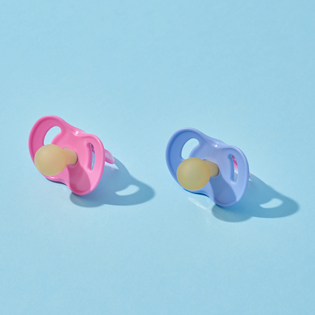








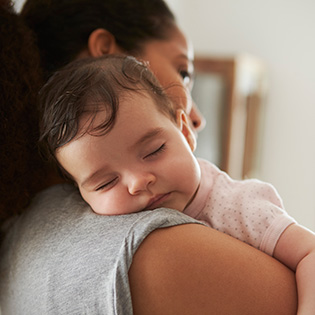


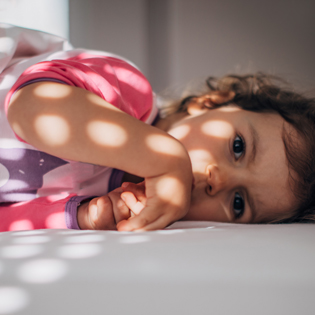

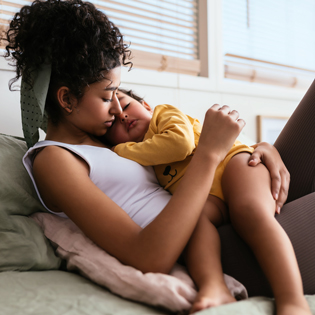















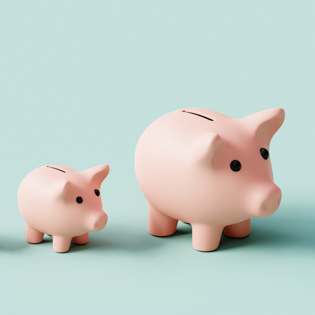









 Trending On What to Expect
Trending On What to Expect





